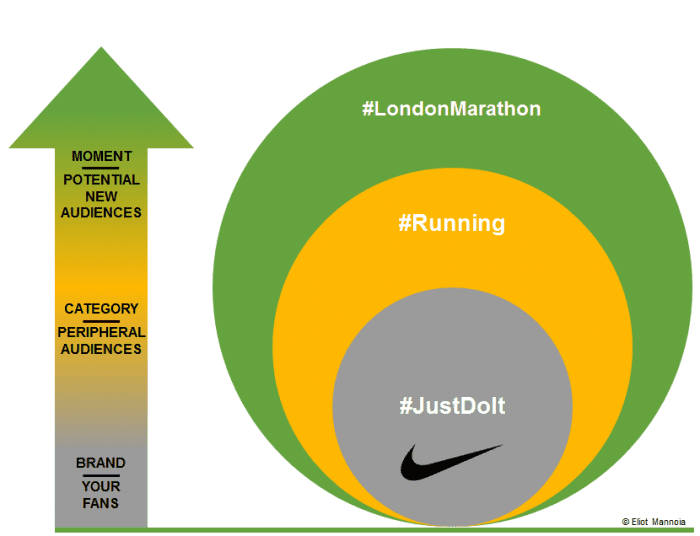Are you using hashtags correctly?
The discipline of marketing is filled with jargon, especially within digital marketing where constant technological change causes prevailing shifts in the landscape. Never have there been more three letter acronyms (TLA).
The elusive ‘hashtag’ symbol, which most people know from entering conference calls, still causes confusion amongst my clients and peers when used on social media platforms. Not so much what they are but when and how to use them. The approach laid out here is by no means an all-encompassing thesis study, merely a brief attempt to demystify the matter in my own subjective opinion.
Hashtags, although used in IT since the seventies in a different context, were popularised by Twitter in the late noughties as a way of clustering similar topics into easily retrievable categories, i.e. search #summer to find all conversations categorised as a ‘summer’ topic. This enables you to join conversations on topics that interest you, from politics to the final episode of Game of Thrones.
Hashtag defined
“A hashtag is a type of label or metadata tag used on social network and microblogging services which makes it easier for users to find messages with a specific theme or content. Users create and use hashtags by placing the hash character (or number sign) # in front of a word or unspaced phrase, either in the main text of a message or at the end. Searching for that hashtag will then present each message that has been tagged with it.” (Wiki.) For a more comprehensive introduction to hashtags I can recommend this article.
Here is a list of some of the social platforms where hashtags can be used, with varying degrees of results.
- Twitter
- Vine
- Instagram
- Facebook
- Pinterest
- Tumblr
- Google+
- YouTube
Extend your reach beyond your fans
With the evolution of social advertising solutions, a growing number of monthly users and ever more content platforms are slowly adjusting their algorithms to optimise what people see in their newsfeeds. According to Facebook there are up to 1,500+ daily posts in people’s newsfeeds. As such they had to adjust the algorithm to favour content from your family and friends over brands that you may follow. It’s the ‘user and user experience always comes first’ ethos. Well, and Facebook want you to advertise too.
Although organic reach is diminishing it is still possible to reach a large audience with organic content. We posted a piece for a client last week which achieved 1,500+ comments, 700+ Likes and reached over 40,000 people. That post was not promoted (advertised). Good content and a strong fan base can still cut through. What’s more, other platforms like Twitter, Instagram, Pinterest etc. still haven’t throttled back their organic reach (Although Instagram is starting to). Here lies the opportunity to deploy strategic hashtags to extend your reach and join other relevant conversations.
According to conversations I’ve had with Twitter and Instagram, the recommendation is to use up to three hashtags per post. Again, this article simply provides a recommendation, depending on which sector you operate in and the platform in question you may well have had success using more hashtags.
The three Hashtag types I would recommend (example Nike):
- Brand related (#JustDoIt)
- Category related (#Running)
- Moment/cultural (#LondonMarathon)

You can read the rest of Eliot's blog on his site, and follow him on Twitter.







